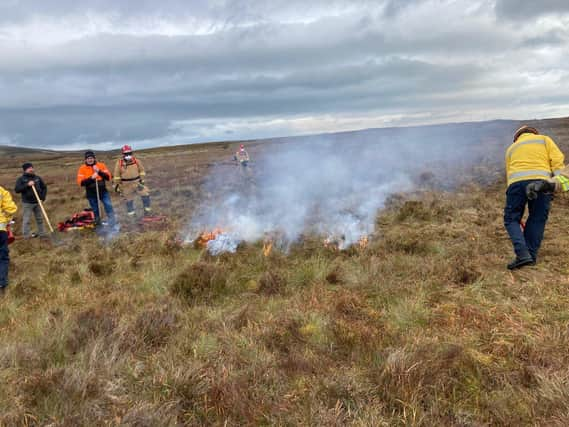Advice on Controlled/prescribed burning


Peatlands are one of the most valuable ecosystems on earth and they need protected. Farmers and landowners are key but don’t get the recognition they deserve for the work they do to protect their peatland. Peatlands also provide a range of other ecosystem services such as water purification, flood alleviation, recreational opportunities, historical archive, and they can produce meat and wool for consumers.
Bogs are sensitive to overgrazing so tramping should be avoided, getting the grazing levels suitable is key and not a simple task as each year brings unique weather. There is a strong role for cattle grazing on upland and hill bog areas but unfortunately cattle grazing is not permitted in special designated sites, and this is something that needs to change going forward. These rules have been in place since the mid 1980’s for those who participated in agri-environmental schemes, and it also includes a restriction on the amount of land that can be controlled by prescribed burning. Since then, there has been an increasing fire load of heather, bracken and dead grass in many areas, and this is a huge wildfire risk.
Advertisement
Advertisement
Controlled/prescribed burning is a management tool used in the uplands for grouse, livestock production and the prevention of wildfires.
The impact of burning on the functioning of a peat bog, on typical bog species and habitats and on ecosystem services such as carbon storage or water quality, is an important issue. Bad practice can have severe damaging consequences for ecological, hydrological and soil processes.
The prescribed burning season is open between 1 September and 14 April. If you are interested in using a prescribed burn on your farm, then you must carry out a risk assessment and have sufficient personnel and resources available to manage the fire. You must also inform NIFRS (Northern Ireland Fire & Rescue Service) in advance on 028 9266 4221 to prevent unnecessary mobilisations of fire appliances.
NIFRS will want to know:
- What time you will start burning?
- The exact location of your fire.
- A contact number for you, or whoever will be responsible for the burning.
- When the fire has been extinguished.
Basic fire safety advice and procedures:
Advertisement
Advertisement
- Choose a site which is clear and free from buildings, trees, overhead cables etc.
- Prepare the land correctly by cutting/flailing fire breaks into the boundary of the area you wish to burn. Fire breaks must always be downwind in order to contain the fire.
- Keep fires as small as possible to prevent them getting out of control.
- Make sure you have an emergency escape route available at all times.
Advertisement
Advertisement
- Do not use fuel to start fires; explosive vapour given off by the fuel can cause serious injuries.
- Never leave a fire unattended; ensure you have sufficient people and extinguishing media available to control the fire.
- Always ensure a fire is completely out before you leave it.
Weather conditions:
Previous - several days of dry conditions will mean greater risk of fire spread.
Current – Check weather forecast for wind strength and direction.
20/20 Rule – Never burn in winds above 20 mph or in temperatures above 20ºC.